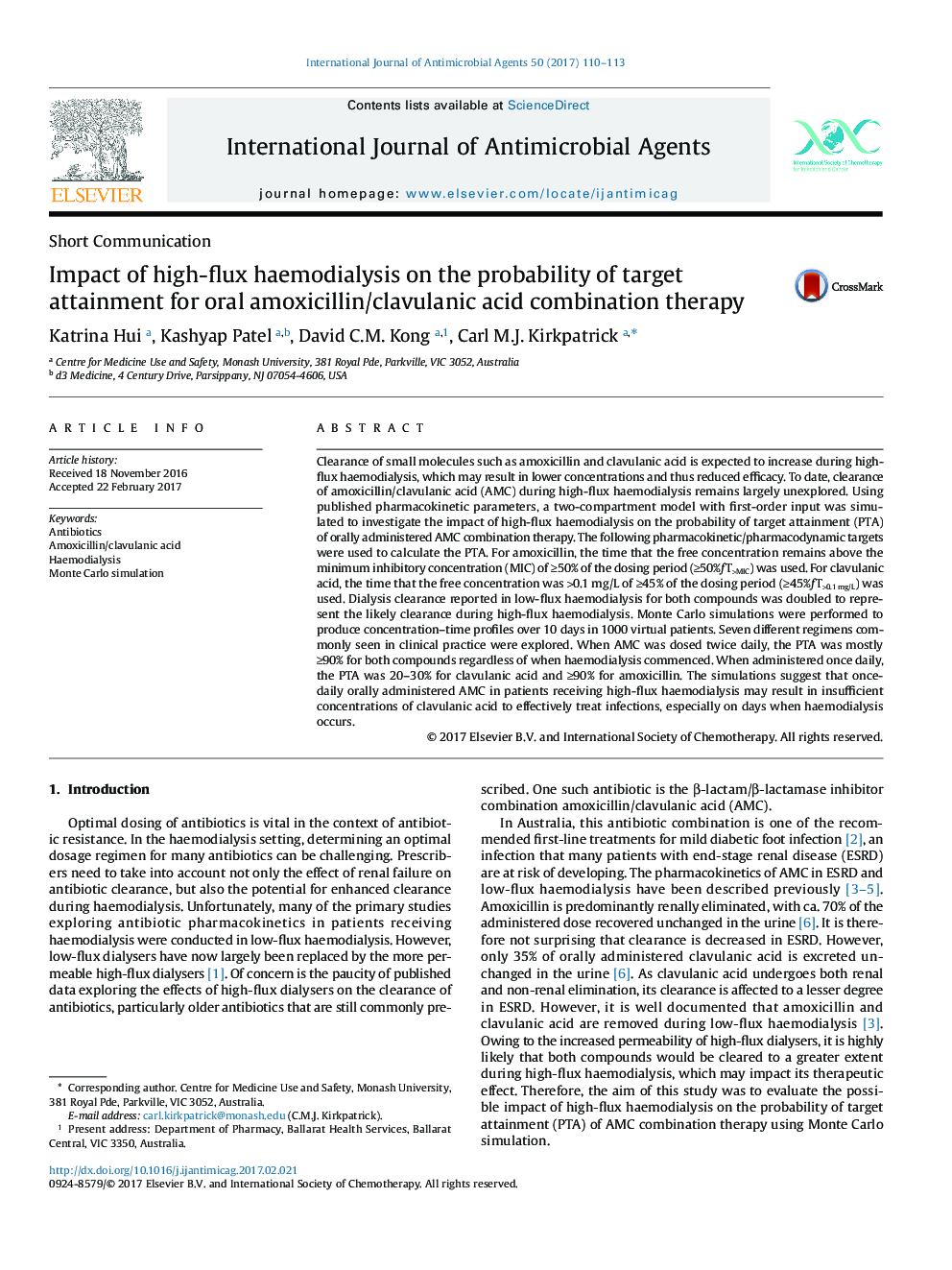| کد مقاله | کد نشریه | سال انتشار | مقاله انگلیسی | نسخه تمام متن |
|---|---|---|---|---|
| 5667011 | 1591739 | 2017 | 4 صفحه PDF | دانلود رایگان |
- Effect of high-flux haemodialysis on amoxicillin/clavulanic acid (AMC) efficacy is unknown.
- Once-daily dosing of AMC may result in insufficient exposures of clavulanic acid.
- Once-daily dosing of AMC on dialysis days should be avoided.
Clearance of small molecules such as amoxicillin and clavulanic acid is expected to increase during high-flux haemodialysis, which may result in lower concentrations and thus reduced efficacy. To date, clearance of amoxicillin/clavulanic acid (AMC) during high-flux haemodialysis remains largely unexplored. Using published pharmacokinetic parameters, a two-compartment model with first-order input was simulated to investigate the impact of high-flux haemodialysis on the probability of target attainment (PTA) of orally administered AMC combination therapy. The following pharmacokinetic/pharmacodynamic targets were used to calculate the PTA. For amoxicillin, the time that the free concentration remains above the minimum inhibitory concentration (MIC) of â¥50% of the dosing period (â¥50%ÆT>MIC) was used. For clavulanic acid, the time that the free concentration was >0.1âmg/L of â¥45% of the dosing period (â¥45%ÆT>0.1âmg/L) was used. Dialysis clearance reported in low-flux haemodialysis for both compounds was doubled to represent the likely clearance during high-flux haemodialysis. Monte Carlo simulations were performed to produce concentration-time profiles over 10 days in 1000 virtual patients. Seven different regimens commonly seen in clinical practice were explored. When AMC was dosed twice daily, the PTA was mostly â¥90% for both compounds regardless of when haemodialysis commenced. When administered once daily, the PTA was 20-30% for clavulanic acid and â¥90% for amoxicillin. The simulations suggest that once-daily orally administered AMC in patients receiving high-flux haemodialysis may result in insufficient concentrations of clavulanic acid to effectively treat infections, especially on days when haemodialysis occurs.
Journal: International Journal of Antimicrobial Agents - Volume 50, Issue 1, July 2017, Pages 110-113
